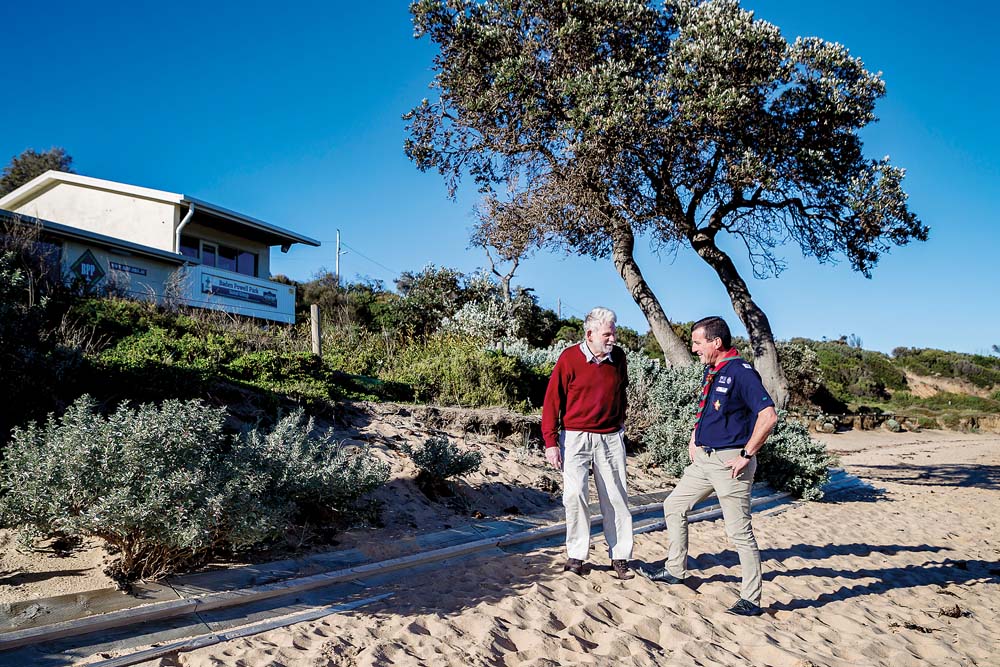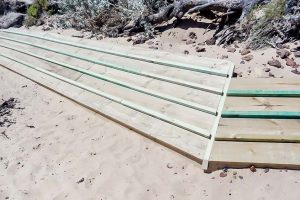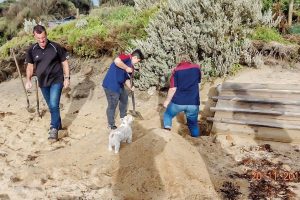
THREATS to a scout hall caused by waves at Canadian Bay, Mt Eliza have been overcome with a beach protection barrier designed by engineer, John Scholes.
The building, previously occupied by sea scouts and since taken over by the Baden Powell Park Scout Group, was in danger of being undermined when waves eroded the sand dune in was sitting on.
Mr Scholes, “a civil engineer, not a hydraulics man”, saw the danger erosion was causing to the hall in 2009.
His solution was to design a sand-filled wooden beach protection barrier that is being credited with stabilising the beach and saving a coastal Banksia tree believed to be at least 120 years old.
A 14.4 metre long trial of the wave barriers proved so successful that the scout group has now extended it to 43 metres.
The barriers designed by Mr Scholes followed efforts to protect the eroding sand dune with sand filled geotextile “pillows”, which were eventually swept aside by waves. In 2015, he designed a wooden ramp to deflect wave energy.
A long-time surf fisherman, Mr Scholes said he had seen wave energy quickly diminish along steep sandy beaches.
The treated pine boards of which his beach protection barriers are made are fixed to 2.4 metre triangular frames. The timber wall sections are lined with geotextile and filled with beach sand.
“Sloping ribbed capping exhausts wave energy, by lifting and back-spinning the wave,” he said.
“The sand behind these walls is trapped by the geotextile and capping, and gives the wall its mass and strength. The area above the wall was then filled with sand and carefully planted using site indigenous [plant] species grown on site [with a Department of Environment, Land, Water and Planning permit.”
Making the barriers was organised as a “hands-on” skills development project for scouts using materials costing about $90 a lineal metre by venturer scouts leader, Tony Gustus.
Mr Scholes said the project involved scouts from Baden Powell Park Scout Group, the Friends of Williams Road Beach, Mt Eliza Association for Environmental Care and Mornington Peninsula Shire. The Bunurong Land Council Aboriginal Corporation and the DELWP helped gain approvals and permits.
Although only completely finished in autumn, Mr Scholes said the first barrier survived “recent winters [without] any physical damage or movement of the structure, nor has there been any scouring of the sand behind the structure”.
“While the sand on the beach comes and goes according to season, the overall effect has been an accretion of sand against the structure, with the beach becoming steeper,” he said.
“In places, much of the structure has become buried. It is hoped that in time the structure may become part of a newly formed primary dune.”
The 30 degree sloping structure was also being used “as impromptu seating” with people also “respecting” vegetation above the wall”.





